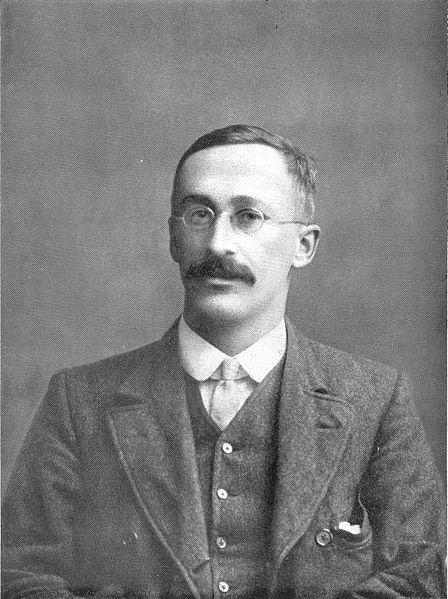<Back to Index>
- Statistician William Sealy Gosset (Student), 1876
- Writer Frances Burney (Madame d'Arblay), 1752
- President of Venezuela José Antonio Páez, 1790
PAGE SPONSOR

William Sealy Gosset (June 13, 1876 – October 16, 1937) is famous as a statistician, best known by his pen name Student and for his work on Student's t-distribution.
Born in Canterbury, England, to Agnes Sealy Vidal and Colonel Frederic Gosset, Gosset attended Winchester College before reading chemistry and mathematics at New College, Oxford. On graduating in 1899, he joined the Dublin brewery of Arthur Guinness & Son.
Guinness was a progressive agro - chemical business and Gosset would apply his statistical knowledge both in the brewery and on the farm — to the selection of the best yielding varieties of barley. Gosset acquired that knowledge by study, trial and error and by spending two terms in 1906–7 in the biometric laboratory of Karl Pearson. Gosset and Pearson had a good relationship and Pearson helped Gosset with the mathematics of his papers. Pearson helped with the 1908 papers but he had little appreciation of their importance. The papers addressed the brewer's concern with small samples, while the biometrician typically had hundreds of observations and saw no urgency in developing small sample methods.
Another researcher at Guinness had previously published a paper containing trade secrets of the Guinness brewery. To prevent further disclosure of confidential information, Guinness prohibited its employees from publishing any papers regardless of the contained information. This meant that Gosset was unable to publish his works under his own name. He therefore used the pseudonym Student for his publications to avoid their detection by his employer. Thus, his most famous achievement is now referred to as Student's t-distribution, which might otherwise have been Gosset's t-distribution.
Gosset had almost all of his papers including The probable error of a mean published in Pearson's journal Biometrika using the pseudonym Student. However, it was R.A. Fisher who appreciated the importance of Gosset's small sample work, after Gosset had written to him to say I am sending you a copy of Student's Tables as you are the only man that's ever likely to use them!. Fisher believed that Gosset had effected a “logical revolution”. Ironically the t-statistic for which Gosset is famous was actually Fisher's creation. Gosset's statistic was z = t/√(n−1). Fisher introduced the t-form because it fit in with his theory of degrees of freedom. Fisher was also responsible for the applications of the t-distribution to regression.
Although introduced by others, Studentized residuals are named in Student's honor because, like the problem that led to Student's t-distribution, the idea of adjusting for estimated standard deviations is central to that concept.
Gosset's interest in barley cultivation led him to speculate that design of experiments should aim, not only at improving the average yield, but also at breeding varieties whose yield was insensitive (robust) to variation in soil and climate. This principle only occurs in the later thought of Fisher and then in the work of Genichi Taguchi in the 1950s.
In 1935, he left Dublin to take up the position of Head Brewer, in charge of the scientific side of production, at a new Guinness brewery at Park Royal in North West London. He died in Beaconsfield, England, of a heart attack.
Gosset was a friend of both Pearson and Fisher, an achievement, for each had a massive ego and a loathing for the other. Gosset was a modest man who cut short an admirer with the comment that “Fisher would have discovered it all anyway.”